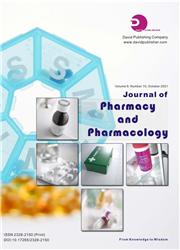A Comprehensive Overview of Models for Hepatoprotective Activity Screening
引用次数: 0
Abstract
: The liver is a crucial imperative organ that is involved in various kinds of metabolic activity and a very stable accessory gland for the digestive system. At this moment, liver dysfunction is a major source of destruction, and its widespread is accentuated in the developed republics. Long-term or persistent inflammation and oxidative stress due to any reason have a substantial impact on the beginning and continuation of chronic diseases such as hepatocellular carcinoma, liver cirrhosis, liver fibrosis, and other hepatic conditions. Liver diseases classified as hepatosis, cirrhosis and acute or chronic hepatitis are one amongst the most severe ailments This review deals with well-established in vivo , in vitro and in silico models for analysing the hepatoprotective activity of extract/drugs. Consequently, animal models are being developed to impressionist hepatic ailments. From several decades, researchers are using distinctive animal models for discovering and understanding the pathogenesis of hepatic ailments. This current cram has been framed to discuss numerous new and traditional experimental models for hepatotoxicity studies. Numerous animal models have evolved to evaluate the pathogenesis and develop drugs for hepatotoxicity. Experimental modes of hepatotoxicity are influential for invention of novel molecular signalling trails for the improvement of human health. This article aims to explore and unfold various possible models available for hepatoprotective models. This miniature review article highlights the hepatopathy models that are being used to observe the activities of liver injuries under hepatotoxic agents.肝保护活性筛选模型的综合概述
:肝脏是参与各种代谢活动的重要必需器官,也是消化系统非常稳定的辅助腺。目前,肝功能障碍是破坏的主要来源,其在发达共和国的普遍性更为突出。由于任何原因引起的长期或持续的炎症和氧化应激都会对慢性疾病的开始和持续产生重大影响,如肝细胞癌、肝硬化、肝纤维化和其他肝脏疾病。肝病分为肝病、肝硬化和急性或慢性肝炎,是最严重的疾病之一。这篇综述涉及用于分析提取物/药物的肝保护活性的成熟的体内、体外和计算机模型。因此,动物模型正在被开发出来,以描绘肝脏疾病。几十年来,研究人员一直在使用独特的动物模型来发现和理解肝病的发病机制。目前的这篇文章旨在讨论许多新的和传统的肝毒性研究实验模型。许多动物模型已经发展到评估发病机制和开发肝毒性药物。肝毒性的实验模式对改善人类健康的新型分子信号通路的发明具有影响。本文旨在探索和展开各种可能的肝保护模型。这篇小型综述文章重点介绍了用于观察肝毒性药物下肝损伤活动的肝病模型。
本文章由计算机程序翻译,如有差异,请以英文原文为准。
求助全文
约1分钟内获得全文
求助全文

 求助内容:
求助内容: 应助结果提醒方式:
应助结果提醒方式:


